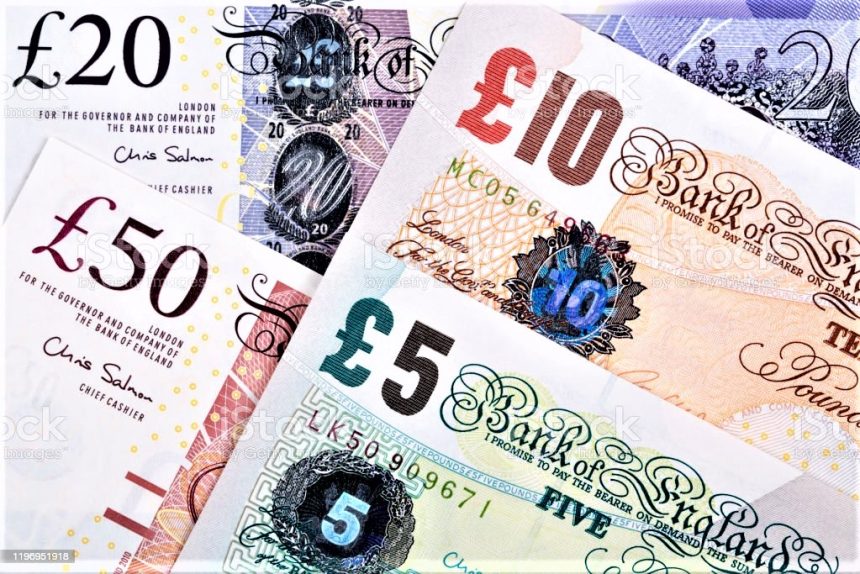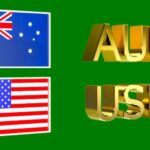The British Pound (GBP) jumped higher on Friday, extending gains against the US Dollar (USD) as markets reacted sharply to a much weaker-than-expected US employment report for July. The GBPUSD pair surged past the key psychological level of 1.3200, hitting multi-day highs as investors aggressively unwound USD long positions in response to the disappointing macro data.
This upside momentum for Sterling was ignited after the US economy added only 73,000 jobs in July—well below the 110,000 consensus forecast—raising concerns over the health of the labor market and increasing the likelihood that the Federal Reserve may cut rates as early as September.
US Dollar Crumbles as NFP Disappoints Expectations
The Nonfarm Payrolls (NFP) report one of the most closely watched indicators of US economic health delivered a significant negative surprise. Not only were job gains far below expectations, but the unemployment rate ticked up to 4.2%, rising from 4.1% in the prior month.
The weak NFP data was further compounded by downward revisions to previous months’ job growth, painting a picture of a cooling labor market and suggesting the Federal Reserve’s tight monetary policy is beginning to bite.
Markets immediately reacted by pricing in a greater likelihood of a Fed rate cut at the September FOMC meeting. According to CME FedWatch data, traders now see a nearly 70% chance of a rate cut at the next Fed policy decision, up from under 50% earlier in the week.
This shift in expectations sent US Treasury yields plunging and triggered a broad sell-off in the US Dollar, with the US Dollar Index (DXY) diving to its lowest level since April.
Pound Reclaims Lost Ground, Hits Multi-Day Highs
Sterling, which had been trading under pressure in recent sessions due to mixed UK economic data and uncertainty over the Bank of England’s policy path, found strong tailwinds in the USD weakness. The GBPUSD pair rallied from intraday lows near 1.3140 to trade above the 1.3200 mark, marking its highest level in two days.
The pair’s upside was also supported by technical buying as it cleared key resistance zones. Momentum indicators such as the Relative Strength Index (RSI) turned decisively bullish on the 4-hour chart, suggesting further gains may be in store if bullish sentiment persists.
Market Repricing: Fed Rate Cut Now in Focus
The NFP data triggered a swift repricing in rate expectations. Just weeks ago, Federal Reserve officials had maintained a cautious tone about the timing of rate cuts, preferring to keep options open amid persistent inflation concerns. But the latest jobs report seems to have changed the narrative.
If upcoming inflation data especially next week’s Core PCE Price Index shows continued disinflation, the Fed may have little choice but to cut rates to prevent a further economic slowdown.
This turn in expectations has created favorable conditions for Pound bulls, especially in the absence of any immediate hawkish catalysts from the UK side.
Bank of England Uncertainty Limits Sterling’s Longer-Term Upside
Despite the strong rally in the Pound today, some analysts remain cautious about Pound longer-term trajectory, particularly given the uncertain monetary policy outlook from the Bank of England (BoE).
While UK inflation has moderated in recent months, wage growth remains elevated, and core inflation is still above the BoE’s 2% target. This has kept policymakers on edge, with some still favoring another rate hike before the end of the year, while others call for patience.
This divergence in opinion has kept GBP somewhat range-bound, with sharp moves primarily driven by external catalystslike today’s US jobs report rather than UK-specific factors.
Pound Technical Outlook: Key Levels to Watch
From a technical standpoint, GBPUSD’s strong rebound from 1.3140 puts the pair back in bullish territory, but resistance lies ahead.
Immediate resistance is located around 1.3245–1.3280, followed by the 100-day SMA at 1.3337.
A more sustained breakout could see the pair targeting the 55-day SMA at 1.3505, with the July 24 high of 1.3588 acting as the next major bullish target.
On the downside, the 1.3140–1.3139 zone (August 1 low and May 12 floor) now serves as initial support. Below that, a deeper pullback could test the critical 1.3000 psychological level.
Momentum indicators remain positive for now, but traders will be closely monitoring upcoming macro data, especially next week’s US ISM Services PMI and the UK’s GDP update.
Broader Implications: Market Caught Between Growth and Inflation
Friday’s market reaction highlights the ongoing tug-of-war between inflation concerns and growth risks. While inflation remains elevated in several G7 economies, slowing job growth and weakening consumer demand suggest the tide is turning.
If the Fed does pivot toward easing in September, we may see a broader reversal in USD strength, especially if other central banks like the BoE or ECB remain on hold or delay their own easing cycles.
For GBPUSD, this scenario could create a medium-term bullish environment, although UK-specific headwinds like stagnant productivity, weak real wage growth, and fiscal tightening may cap Sterling’s upside.
Conclusion: Pound Sterling Back in the Game as Fed Doubts Grow
In summary, the GBPUSD pair has regained strong bullish momentum following a disappointing US jobs report that has cast serious doubt on the Fed’s ability to hold rates steady much longer. The British Pound has capitalized on broad USD weakness, reclaiming levels above 1.3200, with technical indicators signaling more upside potential.
However, the long-term trend will depend on follow-through from upcoming US and UK economic data. Markets are now entering a data-dependent phase, where each release could have outsized impact on FX pricing.
Traders should stay alert for Fed commentary, next week’s US ISM Services PMI, and the UK GDP print, which will provide critical clues on the macro trajectory and potential central bank divergence.
Disclaimer: This blog is for informational purposes only and does not constitute financial advice. Always conduct your own research and consult a professional advisor before making investment decisions.
[sc_fs_multi_faq headline-0=”h2″ question-0=”Why did GBP/USD rise sharply today?” answer-0=”GBP/USD rose sharply because the US July Nonfarm Payrolls report came in far below expectations (73K vs. 110K forecast), sparking a wave of US Dollar selling and increasing expectations of a Fed rate cut in September.” image-0=”” headline-1=”h2″ question-1=”What was the market’s reaction to the US Nonfarm Payrolls report?” answer-1=”The US Dollar dropped significantly, Treasury yields fell, and risk assets rallied. GBP/USD surged as traders began pricing in a higher probability of Fed rate cuts following the weak labor market data.” image-1=”” headline-2=”h2″ question-2=”Is the Fed likely to cut interest rates in September?” answer-2=”Based on the weak NFP and rising unemployment (4.2%), markets are increasingly expecting the Fed to cut rates at its September meeting, with CME FedWatch showing over 70% probability. ” image-2=”” count=”3″ html=”true” css_class=””]









